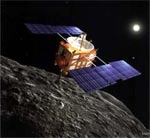 Oh, to have a "dislike" button on Facebook, to be able to tell your friends what you really think of their movie reviews or their complaints about the job when you know you work much harder than they do.
Oh, to have a "dislike" button on Facebook, to be able to tell your friends what you really think of their movie reviews or their complaints about the job when you know you work much harder than they do.
There is such a button being offered around on Facebook, but it is not the real thing. Not only is it not the real thing — it's a rogue application, and if you give it permission to access your profile, it will post spam messages from your account. It will ask you to complete an online survey, which generates money for the wisenheimers who dreamed this scam up.
You may see postings on your Facebook wall purportedly from your friends who may have bitten on this one. And who can blame them? The social networking site lets users click on a "like"  button with a "thumbs up" icon, or post comments about comments, but still, to date, there is no one-click way to transmit the sentiment: "No, I don't like this!"
button with a "thumbs up" icon, or post comments about comments, but still, to date, there is no one-click way to transmit the sentiment: "No, I don't like this!"
 button with a "thumbs up" icon, or post comments about comments, but still, to date, there is no one-click way to transmit the sentiment: "No, I don't like this!"
button with a "thumbs up" icon, or post comments about comments, but still, to date, there is no one-click way to transmit the sentiment: "No, I don't like this!"
Graham Cluley, a senior technology consultant with software security firm Sophos, based in Britain, sounded the alert on his company's blog, noting that "it's the latest survey scam spreading virally across Facebook, using the tried-and-tested formula used in the past by other viral scams." Past successful scams include such lures as Justin Bieber flirting, the world's biggest and scariest snake and the "world's worst McDonald's customer."
 You might see messages posted on your wall saying, "Get the official DISLIKE button NOW!" or "I just got the Dislike button, so now I can dislike all of your dumb posts lol!!." Ignore, ignore, ignore and do not give the application permission to run, says Cluley.
You might see messages posted on your wall saying, "Get the official DISLIKE button NOW!" or "I just got the Dislike button, so now I can dislike all of your dumb posts lol!!." Ignore, ignore, ignore and do not give the application permission to run, says Cluley.
"If you do give the app permission to run, it silently updates your Facebook status to promote the link that tricked you in the first place, thus spreading the message virally to your Facebook friends and online contacts," he wrote.
 "But you still haven't at this point been given a 'Dislike' Facebook button, and the rogue application requires you to complete an online survey." The survey will help make money for the scammers, and point you to a Firefox browser add-on for a "Dislike" button made by FaceMod as a Facebook add-on.
"But you still haven't at this point been given a 'Dislike' Facebook button, and the rogue application requires you to complete an online survey." The survey will help make money for the scammers, and point you to a Firefox browser add-on for a "Dislike" button made by FaceMod as a Facebook add-on.
FaceMod, Cluley says, is not connected with the scam — "their browser add-on is simply being used as bait." Cluley says that if you are desperate to try the actual Dislike button (which his firm is in no way endorsing), be sure to get it only through the Firefox Add-ons Web page.
Part of the reason an offer for a "dislike" button is so alluring is because some Facebook users want one. More than 3 million of them have joined a group on Facebook to say so.
In a July interview with ABC, Facebook CEO Mark Zuckerberg said company officials would "definitely think about" adding a "Dislike" button. But like it or "dislike" it, it hasn't happened yet.















































